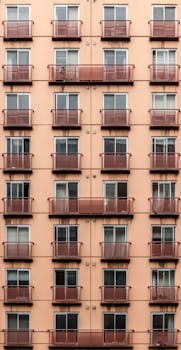
**
The housing crisis continues to grip many nations, with a widening gap between the cost of building new affordable rental apartments and the rents tenants can realistically afford. While innovative apartment design trends are emerging, a leading housing expert warns that aesthetic changes alone are insufficient to bridge this critical "viability gap." This article delves into the complexities of the affordable housing shortage, exploring the limitations of design-led solutions and examining the broader systemic issues demanding attention.
The Growing Viability Gap: More Than Just Aesthetics
The "viability gap" refers to the difference between the cost of developing affordable housing and the rental income it can generate at market-rate affordability levels. This gap is expanding, driven by escalating construction costs, land prices, and regulatory hurdles. Simply put, building affordable apartments is becoming increasingly expensive, even with innovative design strategies.
The Allure of Design-Focused Solutions
The current focus on clever space optimization, micro-apartments, and multi-family dwelling designs offers a glimmer of hope. These modern approaches aim to maximize space efficiency and minimize construction costs. We're seeing a surge in:
- Micro-apartments: Small-scale living spaces optimized for single occupants or couples.
- Modular construction: Prefabricated units assembled on-site, promising faster and cheaper construction.
- Multi-functional furniture: Space-saving furniture that serves multiple purposes.
- Shared amenities: Reducing individual unit sizes by providing communal spaces like gyms, co-working areas, and rooftop gardens.
While these design innovations hold merit in boosting density and potentially lowering per-unit costs, their impact on bridging the viability gap is limited.
Beyond Design: Systemic Issues Fueling the Crisis
The problem extends far beyond the realm of apartment design. Several critical systemic factors contribute to the widening viability gap:
1. Skyrocketing Construction Costs:
The cost of materials, labor, and permits has increased significantly in recent years. This inflation directly impacts the overall development cost, making affordable housing projects financially unviable even with cost-saving design elements.
2. High Land Prices:
Land in desirable urban areas is often exorbitantly priced. This makes acquiring land for affordable housing projects a significant hurdle, driving up the initial investment and further widening the viability gap. This is particularly acute in areas experiencing rapid population growth and gentrification.
3. Regulatory Hurdles and Bureaucracy:
Complex permitting processes, lengthy approval times, and stringent building codes can add substantial delays and costs to projects. Streamlining regulations and reducing bureaucratic red tape is crucial for accelerating affordable housing development.
4. Lack of Funding and Investment:
A shortage of government funding and private investment specifically targeted at affordable housing development hampers progress. Innovative financing models and increased public funding are vital to address this issue.
5. Limited Density Zoning:
Restrictive zoning regulations in many areas limit the construction of multi-family dwellings, thereby reducing the supply of affordable housing units and increasing competition for limited land. Relaxing zoning regulations to allow for greater density is a crucial step towards addressing the housing shortage.
The Path Forward: A Multi-Pronged Approach
Dr. Anya Sharma, a leading urban planning expert, emphasizes that a holistic approach is necessary. "While smart design can contribute to cost efficiency," she argues, "it’s a mere band-aid on a gaping wound. We need a comprehensive strategy addressing the systemic issues driving up the costs of building affordable housing."
This multi-pronged approach should include:
- Increased Public Funding: Government subsidies and grants are crucial for making affordable housing projects financially viable.
- Regulatory Reform: Streamlining permitting processes and relaxing restrictive zoning regulations can expedite project completion and reduce costs.
- Innovative Financing Models: Exploring alternative financing mechanisms like impact investing and community land trusts can diversify funding sources.
- Land Use Policies: Implementing policies that prioritize affordable housing development on publicly owned land or through land-value capture mechanisms.
- Investing in Workforce Development: Addressing the shortage of skilled construction workers through training and apprenticeship programs.
Conclusion: Design is Part of the Solution, Not the Entire Solution
Apartment design innovations like micro-units and modular construction can certainly play a valuable role in improving affordability and efficiency. However, solely relying on clever design to solve the affordable housing crisis is a misguided approach. A comprehensive strategy addressing systemic issues—high construction costs, land scarcity, regulatory hurdles, and funding shortfalls—is essential to bridging the viability gap and providing adequate, affordable housing for all. The future of housing depends on a collaborative effort involving governments, developers, and communities to create truly sustainable and accessible housing solutions. Without this broader perspective, innovative apartment designs will remain a small contribution to a much larger, unresolved problem.


















